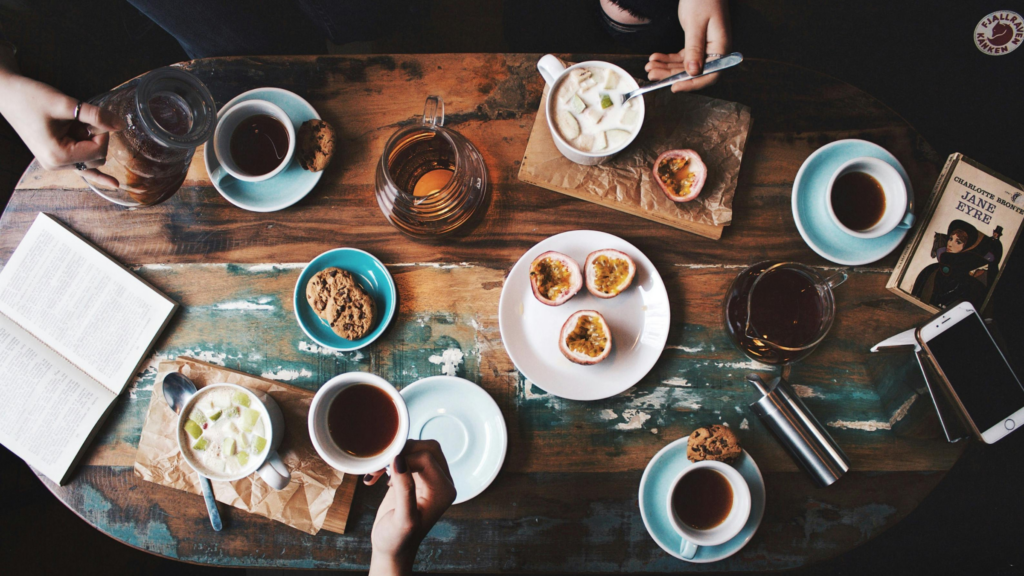“], “filter”: { “nextException”: “img, blockquote, div”, “nextContentException”: “img, blockquote, a.btn, ao-button” } }”>
Heading out the door? Read this article on the new Outside+ app now available on iOS devices for members!
>”,”name”:”in-content-cta”,”type”:”link”}}”>Download App,
Gratitude is rarely a one-size-fits-all experience. The way you choose to express your gratitude can be as subtle as it gets, whether it takes the form of a few thoughtful words, some kind of offering, even a celebration.
How you show gratitude may also vary depending on your geographic location. Variation in history and tradition has resulted in a range of gratitude practices that express the unique values and character of different cultures, all designed to communicate two simple words: thank you.
11 gratitude practices from around the world
from Japan Ozigi (Bending) From food festivals in Italy to mint tea in Morocco, these lessons from around the world on how to practice gratitude can help make your expression even richer at home.
1. India: Pooja
Many people in India appreciate it PrayerDemonstration of the faith inherent in Hinduism. The components of the puja vary by region, but often include offerings, chanting, and prayers at the temple with the goal of expressing gratitude. During puja, images or statues of deities provide physical stand-ins, intended to allow devotees to communicate directly with their deity.
2. Thailand: competency-building
A buddhist practiceMerit-building involves displaying gratitude through acts and offerings. Building merit occurs by developing inner qualities such as generosity, improving personal karma by doing good deeds, and ultimately creating a more harmonious society. The self benefits from these displays of appreciation and others Giving an example of the interrelationship of karma and destiny.
3. Italy: Sagre
Community, culture and food come together sagrewhich are local festivals Which celebrate regional crops and patron saints. Sagre provides attendees with a means to honor the earth’s bounty through gathering and sharing food. Week-long events take place from late summer to early autumn in a public space, such as a field or piazza. Everyone is welcome.
4. Turkey: Coffee Cure
In Türkiye, participating coffee culture This doubles as an opportunity to display your gratitude. A main character in most social interactions, Turkish coffee is usually offered as soon as one enters one’s home and is used in practically all other occasions. It is believed that sharing coffee brings warmth, friendship and gratitude.
5. Japan: Ojigi
Bend (Ozigi) is a nonverbal means of transmitting respect and admiration in Japanese culture. This everyday display of gratitude varies with the depth of the bow increasing or decreasing Depends on negotiation and respect required.
6. Spain: Celebration of near death
Being alive demands gratitude. This gratitude for life is largely demonstrated in the Galicia region of Spain with the Fiesta de Santa Marta de Rebartem, in which participants who have had a near-death experience (or have come close to losing a loved one) They show gratitude to others. Chance in life. While this special performance includes lying in coffinsA similar sentiment can be communicated in a way that works for you.
7. Morocco: Peppermint Tea
A warm welcome in Morocco is usually accompanied by a cup of mint tea. This drink is a symbol of hospitality gratitude to guestsAlso a means of establishing relationships and respect.
8. Hawaii: Ho’oponopono
Healing and harmony make room for gratitude, and Hawaii’s ancient Ho’oponopono prayer is an example of this. Simple expression, meaning “I’m sorry.” Please forgive me. I love you. Thank you” is the goal. Promote forgiveness and balance Through communication of regret, love and gratitude.
9. Africa: Ubuntu philosophy
A way of life more than ritual or practice, ubuntu The philosophy focuses on the value of community and person-to-person interaction. ubuntu translates as “Humanity” or “humanity toward others”, and promotes communitarianism, shared experiences, and gratitude for those around you rather than individualism. Incorporating Ubuntu into your life may include being considerate of others, speaking kindly, or getting involved in community groups or politics.
10. China: Tapping Tea
In China, a “bend the finger” or “tea pat” – tapping two fingers three times on the table – is a way for guests to express silent gratitude to the person serving their tea. This practice is considered a contemporary extension of Rituals of the Confucian era To pay obeisance to the Chinese emperor.
11. Bali: Canang Saree
Balinese culture revolves around ritual. Kanang Saree It is a daily offering that can be easily seen around the island, usually at the entrance of a home or temple, where small gifts of gratitude to the gods are left. These usually consist of a small woven tray that can hold rice, coins, flowers and more.

